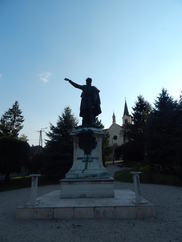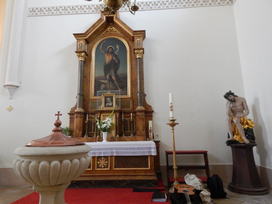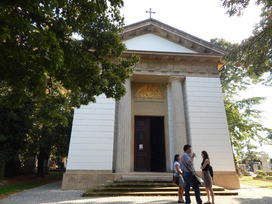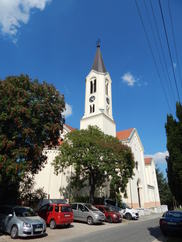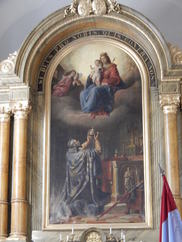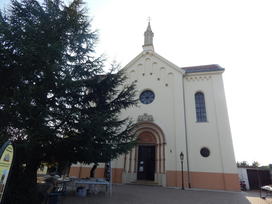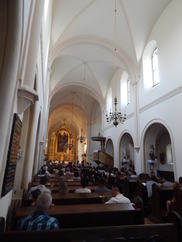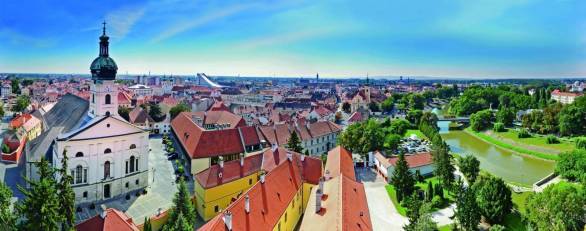St Stephen the King’s Church
Three months before his death, István Széchenyi, confined to the Döbling mental asylum, heard the village’s parish priest’s report on 7 January 1860 about the lamentable condition of the closed tabernacle and wrote in his diary, “we have decided to build a church in Czenk”. Széchenyi was a man of deeds and in February, he commissioned Miklós Ybl to make plans. After his death on 8 April, his widow and son realised the following: laying of its foundation stone on 20 August 1860 and consecration of the church on 20 August 1864. The picture above the main altar of the three-naved Romanesque church with three transepts depicts St Istvan the King offering his country and crown up into Mary’s protection. The Latin text crowning the picture can be translated as “If God is with us, who is against us?” This is the motto of the Széchenyi family, which was reproduced for posterity through the engraving in the impressive marble block of the altar. The 17th century painting depicting Jesus bound and being flogged on the stone on the altarpiece of the left-hand transept should be highlighted among the many things of interest. According to the text below, the painting was on the Széchenyi’s home altar from 1710, then from 1820 it decorated their archives and “remaining wonderfully intact following a raging fire”, was finally moved here in 1863 “due to the piety of religious offspring”. One of István Széchenyi’s prayers can be read on the prints displayed on the benches.
The “greatest Hungarian” rests beneath the family mausoleum in a nearby cemetery. The mausoleum was admitted to the Győr-Moson-Sopron County Values Registry.
